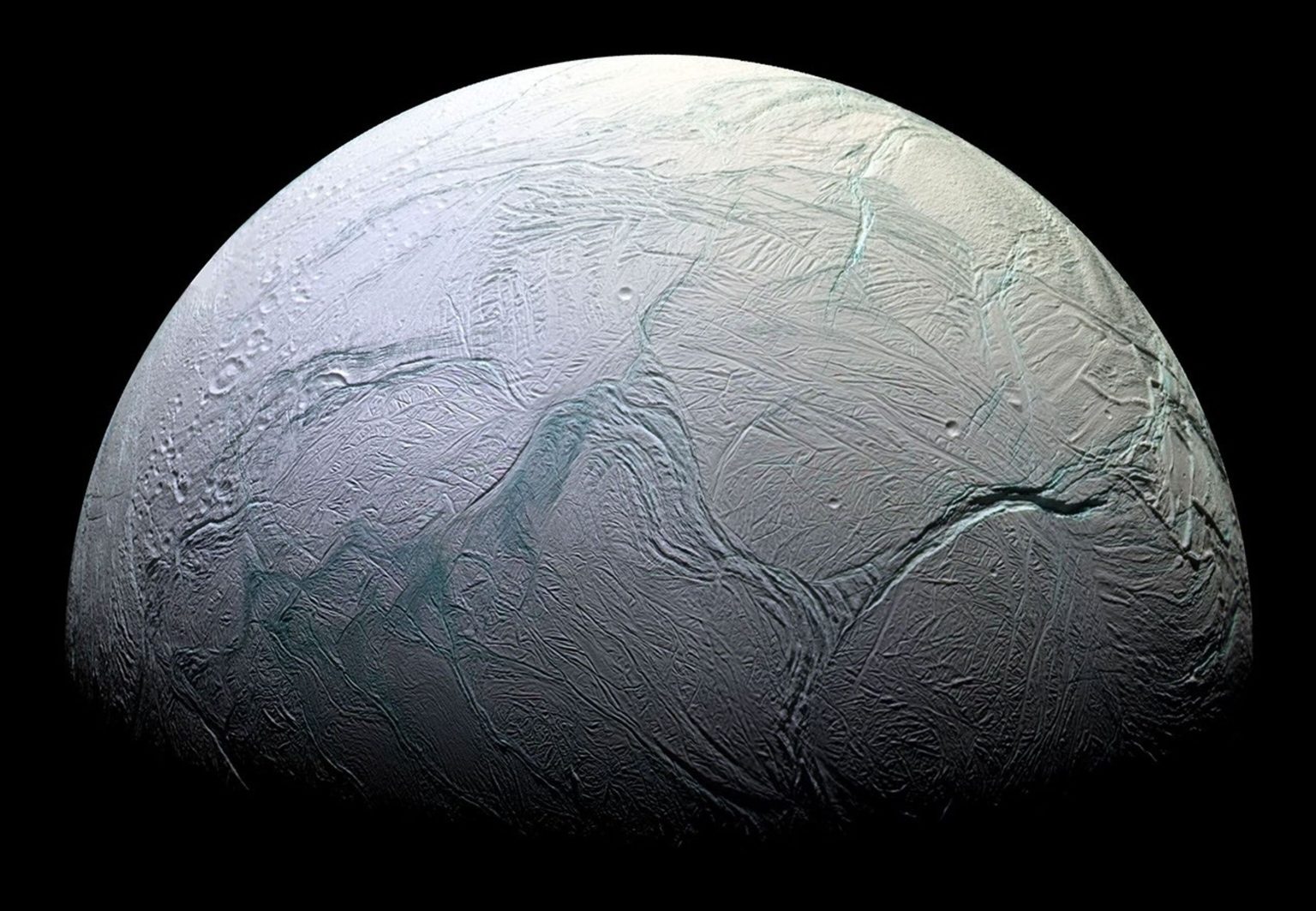Saturn’s moon Enceladus is known for its geysers. They are traditionally believed to originate from geothermal basins of warm water. However, scientists have hypothesized that they may actually originate from areas of intense friction where the material is in a state of “ice mush.”

Enceladus’ geysers
There are 146 moons orbiting Saturn, of which Enceladus is the sixth largest, about 500 kilometers in diameter. This small icy moon is characterized by a white surface that reflects light well and geyser-like jets that eject ice and water vapor hundreds of kilometers into space from its South Pole.
NASA’s Cassini spacecraft discovered these jets in 2005 and then continued to investigate in 2008, 2009 and 2015. As a result, the scientists found that the mineral-rich hot waters have the components necessary for life, despite the moon’s surface reaching extreme temperatures of -201°C.
A large underground ocean covering approximately 20 million km3 is generally considered the main source of Enceladus’ geysers, which erupt through faults in the crust. This is explained by the salinity of the sampled material and the cyclicity of the plumes, which corresponds to the moon’s orbit around Saturn, with associated heating and cooling.
New theory on the origin of jets
However, a new study by Prof. Colin Meyer of Dartmouth College, USA, and colleagues, published in the journal Geophysical Research Letters, offers an alternative explanation.
“The Cassini spacecraft flew through one of Enceladus’ plumes and measured organics, a possible sign of life that makes these geysers unique and important for astrobiology. This plume material comes from a potentially habitable ocean beneath the ice shell, so we want to understand how geysers form to determine if Enceladus is habitable,” Prof. Meyer explains the significance of the study.
“In my opinion, the two main weaknesses of the ocean source are: 1) the difficulty for the fracture to break through the entire shell and 2) the mechanism by which ocean material makes it through the fractures.”
Shear heating of ice
Instead of the subsurface ocean hypothesis, the researchers suggest that shear heating occurs, in which heat is generated by the friction of layers within the material moving at different speeds. According to Prof. Meyer, this is due to tidal forces.
Such shear heating can heat lunar ice above the eutectic temperature, the lowest temperature at which a liquid brine is stable. When the shell areas rise above the eutectic temperature, the salts dissolve into a liquid brine that fills the spaces between the ice crystals.
This can occur on Enceladus in fractures in the salty ice shell, which scientists affectionately call “tiger stripes,” which form a “mushy zone,” a reservoir made up of ice and liquid brine. Cassini samples found water vapor, carbon dioxide, methane, ammonia, carbon monoxide, nitrogen, salts and silica in the geysers.
This liquid brine is formed because the salts in the ice shell reduce the temperature at which the shell melts, causing localized partial melting and subsequent release to the surface in the form of geysers. Professor Meyer’s modeling suggests that 300 kg of ice and vapor could be ejected through the plume every second. This mechanism depends on a steady rate of ice melt and sufficient liquid brine.
Enceladus’ fractures as conduits for life
Although Enceladus’ ice shell can be up to 25 kilometers thick, it may be only 6 kilometers thick above the South Pole, making melting more possible. When the fractures are shallow, the mushy zone is largely absent, but as the depth of the fracture increases, the mushy zone can penetrate through the entire ice shell.
“In the latter case, the fractures become an important conduit for life,” says Prof. Meyer, because “the exchange between the ocean and the surface could allow materials that form the building blocks of life to reach the surface, thus chemically increasing the moon’s potential suitability for life.”
In addition to Enceladus, this research also helps us understand the geophysical processes on other icy moons in our Solar System — such as Neptune’s Triton, Saturn’s Titan, and Jupiter’s Europa — and their potential for life.
According to phys.org


